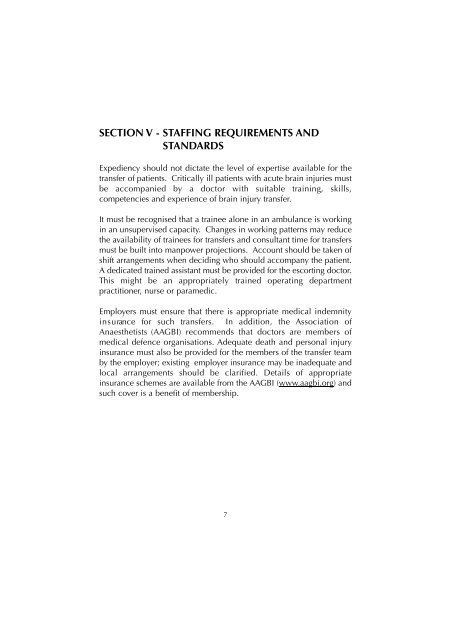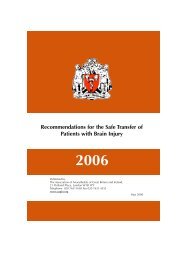TheatrePracticeStandardsGeneric1
You also want an ePaper? Increase the reach of your titles
YUMPU automatically turns print PDFs into web optimized ePapers that Google loves.
SECTION V - STAFFING REQUIREMENTS AND<br />
STANDARDS<br />
Expediency should not dictate the level of expertise available for the<br />
transfer of patients. Critically ill patients with acute brain injuries must<br />
be accompanied by a doctor with suitable training, skills,<br />
competencies and experience of brain injury transfer.<br />
It must be recognised that a trainee alone in an ambulance is working<br />
in an unsupervised capacity. Changes in working patterns may reduce<br />
the availability of trainees for transfers and consultant time for transfers<br />
must be built into manpower projections. Account should be taken of<br />
shift arrangements when deciding who should accompany the patient.<br />
A dedicated trained assistant must be provided for the escorting doctor.<br />
This might be an appropriately trained operating department<br />
practitioner, nurse or paramedic.<br />
Employers must ensure that there is appropriate medical indemnity<br />
i n s u rance for such transfers. In addition, the Association of<br />
Anaesthetists (AAGBI) recommends that doctors are members of<br />
medical defence organisations. Adequate death and personal injury<br />
insurance must also be provided for the members of the transfer team<br />
by the employer; existing employer insurance may be inadequate and<br />
local arrangements should be clarified. Details of appropriate<br />
insurance schemes are available from the AAGBI (www.aagbi.org) and<br />
such cover is a benefit of membership.<br />
7





